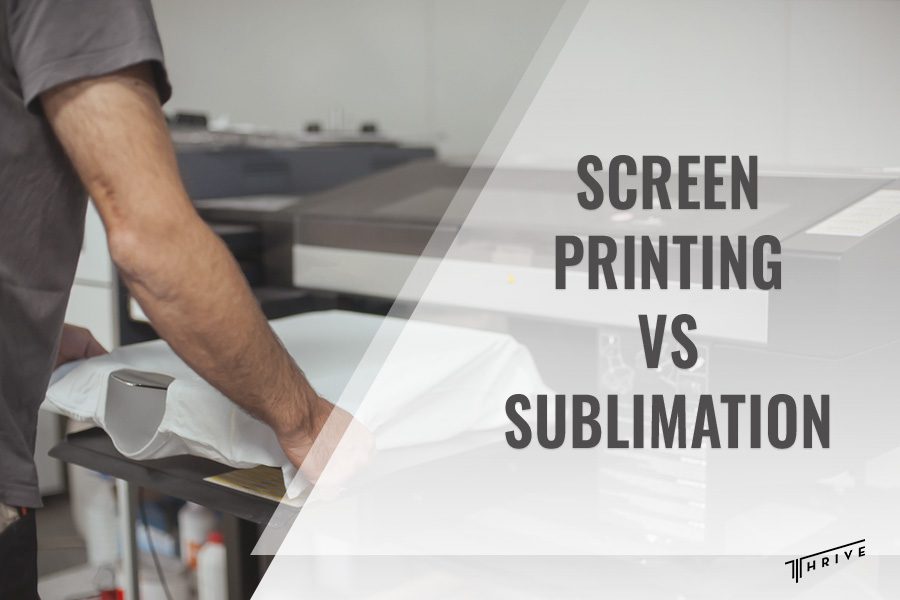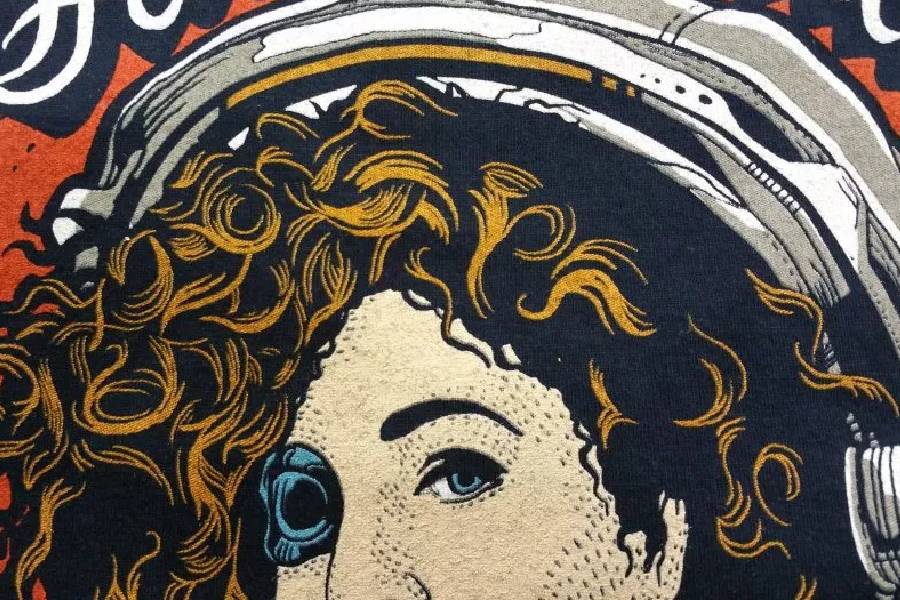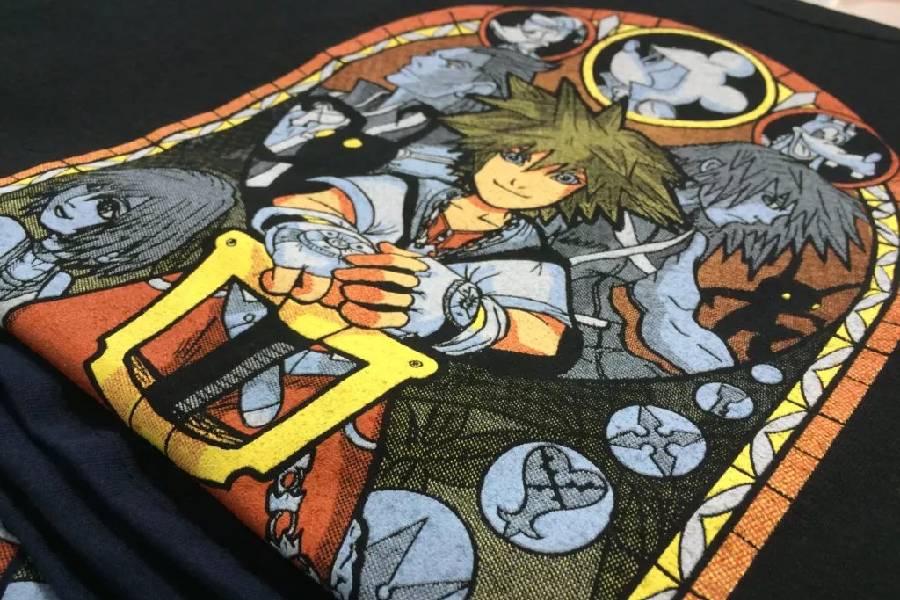
In the world of custom printing, two methods have risen to prominence for their adaptability and ability to produce vibrant, long-lasting designs: screen printing and sublimation printing.
Each method has unique advantages and limitations, making it crucial to understand their differences to determine which one best suits your needs.
The choice of screen printing vs sublimation can significantly impact your printed designs’ quality, cost, and durability. So, it’s crucial to recognize the importance of selecting the proper method, as it can determine the success of your printing projects.
Let’s dive into the world of screen printing and sublimation to help you make an informed decision.
Screen Printing vs Sublimation
Screen printing, which is known as silk screening, involves transferring ink through a mesh screen onto a substrate, making it ideal for bold and durable prints.
Sublimation printing, on the other hand, utilizes heat to bond special ink with the surface of various materials, enabling high-resolution and full-color designs.
Understanding the characteristics of these methods is essential for selecting the most suitable one for your printing needs. The choice between the two depends on factors like design complexity, material, and cost considerations.
Hence, let’s see more about these two methods!

Screen Printing
Screen printing, a prevalent technique in custom printing, involves precisely applying ink by pushing it through a mesh screen onto a chosen substrate. This method is favored for creating vibrant, long-lasting designs with exceptional detail.
It’s characterized by a step-by-step process that requires careful attention to each stage, resulting in high-quality and durable prints.
- Design preparation – The desired design is separated into color layers corresponding to a specific screen.
- Screen preparation – A mesh screen is coated with a light-sensitive emulsion. The design is then transferred onto the screen, creating a stencil.
- Ink application – The design is printed by putting ink on the screen and using a squeegee to push the ink through the mesh and onto the substrate.
- Drying and curing – Once printed, the substrate is dried or cured, depending on the ink type, to ensure the design’s durability.
Advantages of screen printing
- Durability – Screen printing yields robust prints capable of withstanding extensive wear and washing.
- Versatility – It can be used on various materials, from fabrics to paper and plastics.
- Vibrant colors – Screen printing offers rich, opaque colors, making it suitable for striking designs.
Disadvantages of screen printing
- Complex setup – Creating screens for each color can be labor-intensive and expensive, making it less ideal for small print runs.
- Limited detail – Screen printing may not be suitable for intricate and highly detailed designs due to its limitations.
Common applications of screen printing
- Custom apparel – Screen printing creates personalized clothing items such as T-shirts, hoodies, hats, and jackets.
- Promotional products – It’s an ideal choice for producing promotional materials like posters, banners, and promotional items such as pens, tote bags, and keychains.
- Signage – Screen printing is widely used in the signage industry for indoor and outdoor applications.
- Textiles – Besides clothing, screen printing is used on various textile products, including home decor items like curtains, pillow covers, and tablecloths. The process allows for intricate designs and vibrant colors, enhancing the aesthetics of textiles.
- Ceramics and glass – It is used to decorate ceramics, glassware, and glass containers. This application is common in producing decorative items, dinnerware, and glass packaging.
- Electronics – Screen printing plays a crucial role in the electronics industry by printing on circuit boards, control panels, and graphic overlays for various electronic devices. It provides precise and durable labeling for electronic components.
- Industrial applications – Many industrial equipment and machinery feature screen-printed labels and markings for identification, safety information, and branding. The durability of screen prints ensures these markings withstand harsh industrial environments.
Sublimation Printing
Sublimation printing is a versatile and increasingly popular printing method that relies on heat to transfer ink into materials. This innovative process allows for full-color, high-resolution designs on various substrates, particularly polyester-based materials.
With sublimation printing, the ink becomes an integral part of the substrate, offering exceptional durability and vibrant results. It follows these key steps:
- Ink transfer – The design is printed onto special sublimation paper using sublimation ink.
- Heat and pressure – The printed design is placed on the substrate, so heat and pressure are applied. The ink transforms into a gas and bonds with the substrate’s surface.
- Cooling – After the heat source is removed, the ink solidifies, resulting in a permanent, high-resolution print.
Advantages of sublimation printing
- Full-color printing – Sublimation excels at producing full-color prints with intricate details and smooth gradients.
- Smooth finish – It leaves no texture or additional layer on the substrate, resulting in a professional, smooth finish.
- Versatility: Sublimation can be used on various materials, including fabric, ceramics, metal, and more.
Disadvantages of sublimation printing
- Material limitations – Sublimation primarily works best on polyester or polyester-coated substrates, limiting its applications compared to screen printing.
- Durability on fabrics – Sublimation prints on fabric may not be as durable as screen prints when subjected to repeated washings.
Common applications of sublimation printing
- Sportswear and apparel – It’s perfect for vivid and intricate designs on team uniforms and personalized clothing.
- Personalized gifts – Mugs, phone cases, and mousepads get a personal touch with full-color sublimation prints.
- Home decor – Sublimation transforms home elements like pillows, curtains, and wall art, adding vibrant and detailed designs.
- High-quality photography – It’s a choice for photographers seeking sharp, vibrant, and long-lasting prints.
- Promotional products – Businesses benefit from its durability for branded items like apparel and keychains.
- Interior design and fashion – Designers use it to create custom fabrics, curtains, and even upholstery.
- Awards and plaques – Sublimation ensures high-resolution images and text for customized awards.
- Artistic and boutique products – Artisans and boutiques use it to craft unique products like handbags and scarves with intricate designs.

Comparison Between Screen Printing and Sublimation
Cost considerations
Screen printing can be cost-effective for larger print runs of simple designs. Initial setup costs, including screen preparation, can be higher, but the per-unit cost decreases with higher quantities.
Sublimation may be more economical for smaller quantities and complex, full-color designs. While initial setup costs, including sublimation printers and heat presses, can be higher, there are no additional per-color or per-design charges.
Print quality and durability
Screen printing offers excellent print quality with vibrant colors, especially on dark fabrics. It’s known for its durability, making it suitable for items that undergo frequent wear and washing.
Sublimation excels in high-resolution, full-color designs. The prints are durable, as the ink becomes a part of the substrate, ensuring resistance to fading, cracking, or peeling.
Complexity and setup
Setting up screens and aligning colors can be a complex process. It requires specialized equipment and skilled operators to achieve precise prints.
On the other hand, sublimation setup involves preparing the design and heat-pressing it onto the substrate. While it requires some technical knowledge, it’s generally less complex than a screen printing setup.
Material compatibility
Screen printing may be applied to a variety of surfaces, including fabrics, paper, plastic, and metal.
However, sublimation is most effective on polyester-based materials or those with a polyester coating. It may not produce optimal results on natural fabrics like cotton.
Environmental impact
Screen printing often involves the use of chemical-based inks and cleaning agents, which may have environmental impacts. Proper disposal and waste management are essential considerations.
Sublimation ink is considered to be more eco-friendly. However, heat presses can be energy-intensive. Choosing eco-friendly sublimation inks and energy-efficient equipment may help reduce the environmental footprint.
Frequently Asked Questions
Is sublimation more durable than screen printing?
Sublimation printing is known for its durability, especially on polyester-based materials. The ink essentially becomes a part of the substrate, making it resistant to fading, cracking, or peeling.
Screen printing, while also durable, may experience wear and tear over time, particularly on fabrics with frequent wash cycles.
Can you screen print with sublimation ink?
Screen printing typically uses specialized screen printing inks rather than sublimation ink. Attempting to use sublimation ink in screen printing may not yield the desired results. Sublimation ink is specifically formulated for the sublimation process, which involves heat activation to transfer the ink to the substrate.
Is screen printing cheaper than sublimation?
The cost comparison between screen printing and sublimation depends on factors like the print volume, design complexity, and material choice. Screen printing is often cost-effective for larger print runs of simple designs, while sublimation can be more economical for smaller quantities and intricate, full-color designs.

Conclusion
In custom printing, the choice between screen printing vs sublimation hinges on specific needs.
Screen printing offers durability and versatility, ideal for custom apparel and signage. Sublimation excels in full-color, high-resolution prints for gifts, decor, and photos.
Therefore, choose the method that aligns with your project’s requirements and material compatibility. Both offer unique strengths to bring your creative visions to life with personalized and stunning prints.
Robert Fisher is the founder and CEO of Thrive Screen Printing and brings extensive experience in the screen printing and fulfillment industry.

